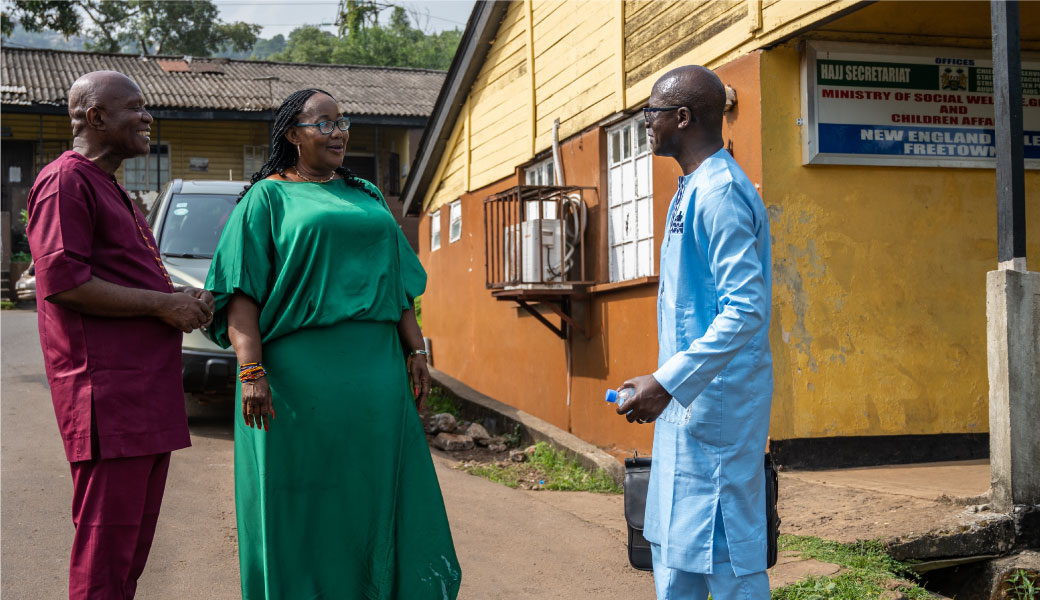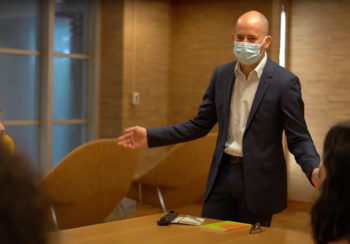An estimated 33% of children aged 5 to 17 in Sierra Leone’s Eastern Province have experienced child trafficking, and 36% have experienced child labor, according to new research from the African Programming & Research Initiative to End Slavery (APRIES) at the University of Georgia’s Center on Human Trafficking Research & Outreach (CenHTRO).
The research, based on the largest-scale household survey on the topic ever undertaken in Sierra Leone, offers insight into how and why child trafficking happens in the West African country. The report describes child trafficking and child labor in Sierra Leone’s Eastern Province, which comprises three rural districts near borders with Guinea and Liberia and is among the poorest areas in what is considered one of the world’s poorest countries.
“Without reliable estimates of child trafficking and child labor, government and NGOs cannot have a baseline to work from, making it impossible to know if we are making progress in reducing the problem,” said CenHTRO Director David Okech, principal investigator for the report.
The nature of trafficking in Sierra Leone results in Eastern Province children being taken outside the region, often to more urban areas. Trafficking most commonly occurred when a child was relocated away from their biological family by someone offering the promise of educational opportunities, according to the report. Instead, away from home, the child experienced forced labor, was denied necessities like food and shelter, and lacked access to school. In some instances, relatives or acquaintances trafficked the child.
“I am the only one doing all the work, and she did not send me to school,” one survivor said in an interview.
“While her own children went to school, I was left at home to undertake the household chores,” another survivor reported.
Survivors primarily described being forced into domestic work or street vending. Others participated in hazardous labor in the fishing, mining or construction industries. The report defines child trafficking, in accordance with the United Nations’ Palermo Protocol, as the recruitment, transportation, transfer, harboring or receipt of a person under the age of 18 for any form of exploitative labor or commercial sex act. Child labor is any work that deprives children of their childhood, their potential and their dignity, and that is harmful to physical and mental development.
Between 2019 and 2020, researchers collected data under the immense pressures presented by the COVID-19 pandemic. For the project, funded by the U.S. Department of State, they conducted over 3,000 household surveys; interviewed survivors, parents and key stakeholders; and organized 23 focus groups.
“The study amplifies perspectives of important Sierra Leonean stakeholders to better understand what actions can be taken to reduce and prevent child trafficking,” said CenHTRO Assistant Research Scientist Anna Cody. “Our findings reveal opportunities for increased survivor-centered and community-based collaborations between national leaders, local communities and international groups to reduce child trafficking prevalence not just in Sierra Leone, but globally as well.”
Among other findings, the report summarizes community perspectives on child trafficking and child labor. It also identifies the populations most vulnerable to trafficking: 12-to-17-year old children, children who have lost one or both parents, and children not enrolled in school.
Over the past 30 years, Sierra Leone experienced a series of man-made and natural disasters that left the country’s children vulnerable to trafficking. A civil war from 1991 to 2002 and the Ebola epidemic increased poverty and malnutrition in the country. These traumatic events exacerbated the number of orphaned or abandoned children in Sierra Leone, and the report suggests that children who have lost one or both parents have a higher rate of victimization. The ongoing COVID-19 pandemic has also made life more difficult for Sierra Leone’s children, increasing their vulnerability to trafficking and impacting effective responses to the problem.
One unique aspect of the challenges faced by children in Sierra Leone is the dependency of families on informal fostering arrangements known as menpikin, in which children reside in households separate from their biological parents. The practice predates the civil war, is common in many Sub-Saharan African countries, and is considered a way for parents to improve their children’s lives.
But the report—informed by survivors and key stakeholders—proposes that bad actors can abuse menpikin.
“We were poor, and my mother could not cater for my needs, so she saw an opportunity in my trafficker’s request to take me away. [The trafficker] promised [my mother] of giving me a better education,” one survivor said in an interview.
The report’s recommendations include greater safeguards for children in informal fostering arrangements; increased access to educational opportunities, especially for children living without one or both parents; and, overall, increased collaboration and cooperation throughout Sierra Leone society—between government agencies, families, community leaders and all non-government stakeholders—to prevent trafficking and support survivors.
UGA faculty Tamora Callands, Jody Clay-Warner and Nathan Hansen, as well as University of Liverpool professor Alex Balch, served as co-investigators on the project.






